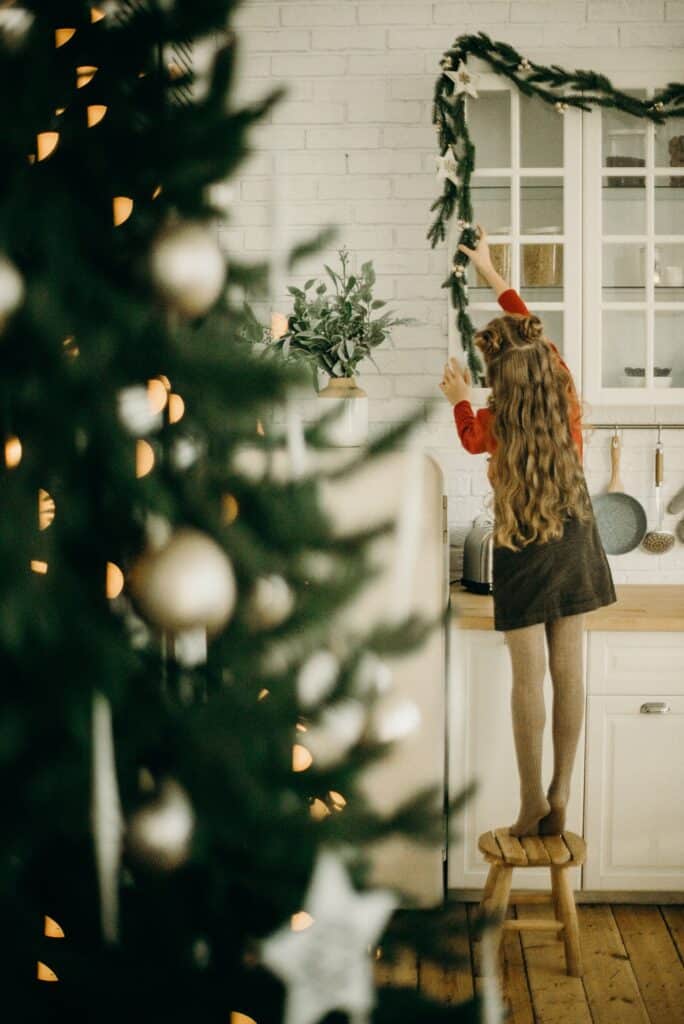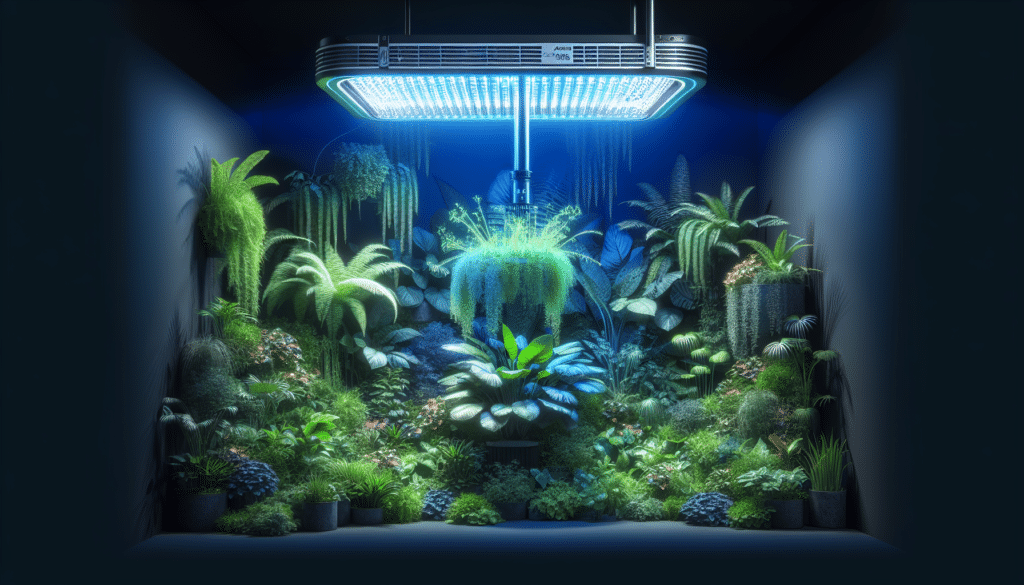Immersing ourselves in the world of indoor gardening, we’re often left longing for more ample and abundant sunlight. But what if there was a way to replicate that life-giving, warm luminescence within the reclusive corners of our homes? Enter the versatile grow light – our solution to indoor plants’ solar woes, a beacon of hope in the gloomiest nooks and crannies.
On our collective green-thumb journey, we’ll uncover the remarkable potency of these astonishing artificial suns while exploring their varied usage. Demystifying the complexities of grow light setups and breaking down the science behind it all, we plant-persons learn how to achieve thriving indoor gardens. Armed with these waterproof, long-lasting miracles tailor-made to our needs, we can cultivate flourishing indoor greenery, turning any space into a verdant haven.
Benefits of Indoor Gardening with Grow Lights
We have all heard the age-old saying “If you can’t give a plant sunlight, give it a grow light.” The magic of indoor gardening is that it’s possible to bring the benefits of sunlight into the comfort of your home with the help of grow lights.
Increased plant growth and productivity
Experience a new era of indoor plant cultivation using grow lights. These artificial sources of light stimulate photosynthesis, promoting extensive plant growth and productivity. Imagine all the verdant corners of your home brimming with lush, healthy plants that owe their radiant existence to the clever intervention of grow lights.
Year-round gardening
A significant advantage of indoor gardening with grow lights is the possibility of year-round cultivation. There’s no need to wait for the perfect season or to worry about changing climate conditions affecting your green companions. With grow lights, we are gardening without the constraints of weather or seasons.
Ability to control light intensity and duration
Most excitingly, the indoor gardener possesses the power to control the intensity and duration of light exposure. Much like a plant deity, you have the command over the artificial sun, adjusting it in response to your plants’ needs – it’s like playing God in a botanical world.
Types of Grow Lights
Understanding the types of grow lights is the first step in our journey into indoor gardening. All of them are designed to mimic the sunlight but operate in slightly different ways.
Fluorescent grow lights
Fluorescent grow lights are the traditional favorites. They are energy efficient, emit less heat, and are perfect for herbs, seedlings, and plants that need less light.
High-intensity discharge (HID) grow lights
Moving on to High-Intensity Discharge (HID) grow lights, these are the big guns of indoor plant lighting. They emit a significant amount of heat and light and are better suited for large indoor gardens.
LED grow lights
Finally, the contemporary heroes of indoor plant lighting are LED grow lights. They are energy-efficient, emit less heat, and offer a broad spectrum of light, invaluable for all stages of plant growth.

This image is property of i.ytimg.com.
Choosing the Right Grow Light for Your Indoor Garden
Choosing the right grow light is akin to picking out the perfect pair of shoes – it needs to suit the task at hand, and fit just right.
Consider the type of plants you are growing
First, consider your plant type. Leafy greens might prefer a different light intensity than fruiting or flowering plants.
Evaluate the light intensity requirements
Evaluate the light intensity requirements of your plants. If they need an abundance of light, a high-intensity grow light might be their best match.
Determine the size and layout of your garden
Lastly, consider your indoor garden’s size and layout. For larger areas, you may need more powerful or multiple lights, while a modest-sized garden could benefit from just a single fluorescent or LED light.
Factors to Consider in Grow Light Placement
Grow light placement is not merely hanging the light over the plants. It’s a fine dance between legion factors.
Optimal distance between plants and grow lights
Maintaining an optimum distance between the plants and grow lights is of paramount importance. Too close could burn the plants, while too far, the light may not fully reach them.
Positioning the lights for uniform coverage
Ensure uniform coverage of light for all plants. Position the lights in such a way that all plants, from center to corner, enjoy the same light exposure.
Avoiding shadows and hot spots
Lastly, avoid creating shadows that leave some plants in the dark, and prevent hot spots that could damage plants with light in excess.

This image is property of images.pexels.com.
Setting Up Your Indoor Garden with Grow Lights
Setting up an indoor garden requires thoughtful considerations, just like designing the perfect room layout.
Choosing the right pots or containers
The choice of pots or containers can make a difference in your plants’ health. Some plants like to stretch out their roots, needing broad, shallow containers, while others, like a deep, narrow home.
Selecting the appropriate growing medium
It’s a misconception that all plants love soil. Some prefer peat, coir, perlite, or vermiculite. Experiment with different growing mediums to find the best fit for your plants.
Providing adequate ventilation and airflow
Lastly, don’t forget to plan for ventilation and airflow in your indoor garden. Plants need to breathe, too.
Using Grow Lights for Different Stages of Plant Growth
Nothing is more satisfying than watching your plants grow from seeds. Different stages of growth require varying wavelengths of light.
Seed germination and propagation
In the beginning stage of seed germination and propagation, blue light is required in abundance to ensure healthy root growth and plant development.
Vegetative growth stage
As the plants enter the vegetative growth stage, a mix of blue and red light supports their essential physiological activity, leafy growth, and chlorophyll production.
Flowering and fruiting stage
When plants are ready to flower and fruit, they need more red light, resembling the warm hues of sunlight in the autumn season.

This image is property of images.pexels.com.
Maintaining and Caring for Your Grow Lights
Nurturing your indoor garden isn’t just about caring for the plants but also about looking after your grow lights.
Cleaning and dusting the lights regularly
Dust can limit the light emission from your grow lights. Maintain their radiance by cleaning and dusting them regularly.
Replacing bulbs or LEDs when needed
Keep an eye on the bulbs or LEDs. When their light begins to wane, it’s time to replace them to ensure your plants get the light they need.
Checking for any signs of damage or malfunction
Lastly, periodically check for any signs of damage or malfunction in the lights. Early detection can save time, money, and most importantly, your precious plants.
Supplementing Grow Lights with Natural Light
An excellent practice among indoor gardeners is to supplement artificial light with natural light whenever possible.
Determining the light requirements of your plants
Understand the light requirement of your plants. Some plants bask in sunlight, while others prefer shadier conditions.
Positioning your indoor garden near windows
If supplementing with natural light, place your indoor garden near windows where the incoming sunlight can dance on your plants along with the grow light.
Using curtains or shades to control natural light exposure
Use curtains or shades to control the natural light exposure. These wonderful, standard home accessories can double as light moderators for your indoor garden.

This image is property of images.pexels.com.
Common Mistakes to Avoid in Indoor Gardening with Grow Lights
Indoor gardening with grow lights is relatively easy, but there are pitfalls to avoid.
Overexposure or underexposure to light
Plants can get sunburnt too! Avoid overexposure to light, equally vital is to ensure the plants do not remain under-exposed.
Inadequate watering or fertilizing
Remember, indoor plants are not raining in flowers. A common mistake is not caring about their water or fertilizer requirements. Neglecting them could stunt their growth.
Ignoring proper plant spacing
Lastly, never ignore proper plant spacing. Overcrowding can lead to unequal light distribution and may also encourage the spread of diseases.
Conclusion
With modern grow lights, we can summon the power of the sun at our convenience and control. Let’s embark on this exciting indoor gardening journey together, creating green, lush spaces that add a spark of life and vibrancy to our homes. Indoor gardening with grow lights – it’s where technology meets the green thumb.


